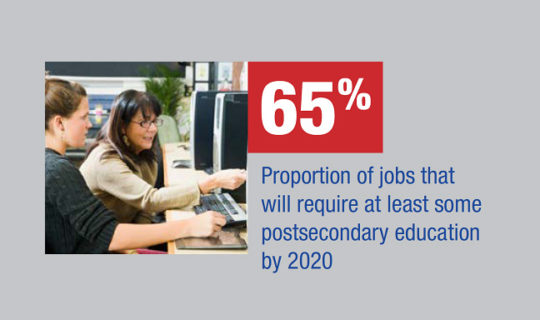Resource: Seizing the Moment
Community Colleges Collaborating to Improve Student Success
With the national spotlight on community colleges, we have a unique opportunity to seize the moment and collaborate with K–12 to increase student success. Efforts to increase community college access and open doors to more students must include a complementary focus on improving readiness. Otherwise, remediation rates will remain unacceptably high, and our efforts to increase access may amount to an empty promise for many young people.
K–12 is raising standards to ensure that students are better prepared for college and careers. High schools are poised to use the new standards to both accelerate those students who are ready for college-level coursework and to deliver extra support for those students who need it to be college ready by the time they graduate. But K–12 cannot close the gap without higher education’s help. Community colleges have a clear role to play and much to gain by forming stronger partnerships with their K–12 schools. With the leadership of presidents and trustees, community colleges can leverage the higher expectations in K–12 to improve the preparation and success rates of incoming students.
The programs highlighted in the report across three action areas – precollege interventions to help students speed up and catch up, streamlined postsecondary placement practices to smooth student transitions, and redesigned freshman-year experiences to meet student needs – show what is possible when community colleges take action and collaborate deeply with K–12 schools to align expectations and promote college readiness for all students. The time to close the preparation gap is now.
The American Association of Community Colleges, the Association of Community College Trustees, and the Higher Ed for Higher Standards coalition are calling on community college leaders nationwide to take the following actions to close the preparation gap:
- Partner with K–12 leadership to bring more substantial college readiness supports and interventions into the high schools.
- Identify college readiness measures that can trigger supports in high school, signaling aligned expectations between K–12 and colleges.
- Revise institutional placement practices to honor college-ready achievement by students on these new measures.
- Provide first-year students who are not yet college ready with evidence-based remediation opportunities, including co-requisite models and guided pathways to support their success.
- Work with system leaders and policymakers to adopt statewide policies that encourage these practices.







